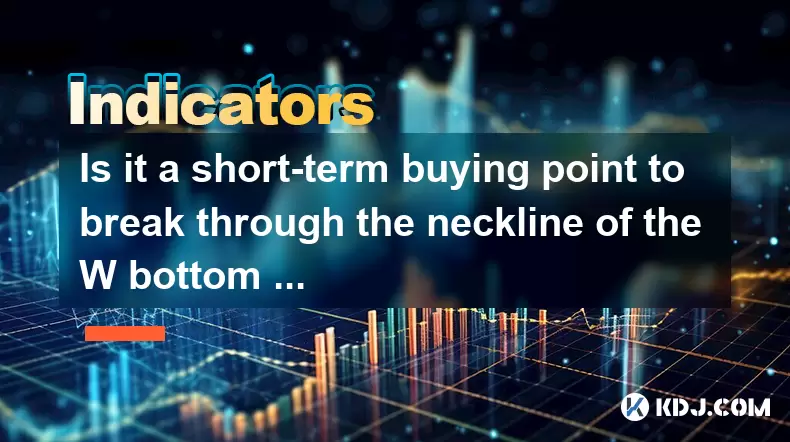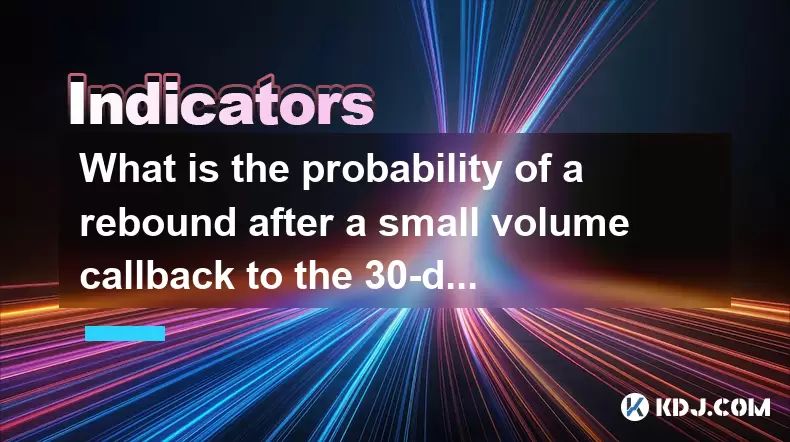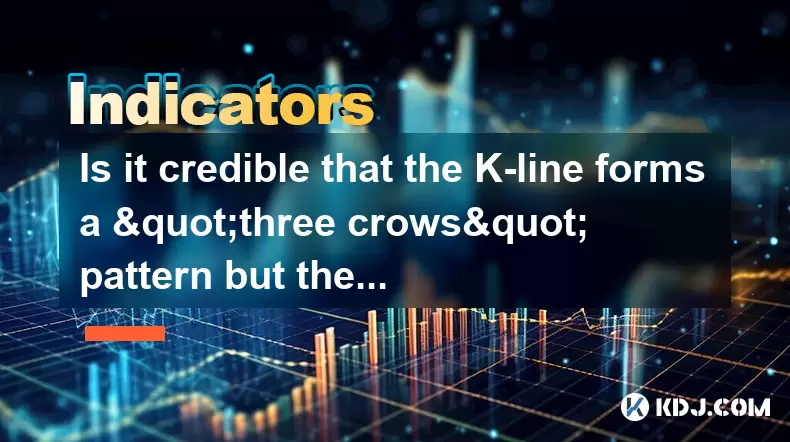-
 Bitcoin
Bitcoin $105,978.7605
5.45% -
 Ethereum
Ethereum $2,423.8735
9.54% -
 Tether USDt
Tether USDt $1.0005
0.02% -
 XRP
XRP $2.1626
9.40% -
 BNB
BNB $641.9746
4.79% -
 Solana
Solana $146.4071
11.93% -
 USDC
USDC $0.9999
0.00% -
 TRON
TRON $0.2735
4.33% -
 Dogecoin
Dogecoin $0.1646
10.74% -
 Cardano
Cardano $0.5839
9.61% -
 Hyperliquid
Hyperliquid $38.4234
8.79% -
 Sui
Sui $2.8430
18.30% -
 Bitcoin Cash
Bitcoin Cash $469.1401
3.03% -
 Chainlink
Chainlink $12.9029
12.83% -
 UNUS SED LEO
UNUS SED LEO $9.1005
0.89% -
 Avalanche
Avalanche $18.1358
11.70% -
 Stellar
Stellar $0.2453
8.78% -
 Toncoin
Toncoin $2.9174
7.94% -
 Shiba Inu
Shiba Inu $0.0...01160
11.29% -
 Litecoin
Litecoin $85.3114
7.70% -
 Hedera
Hedera $0.1512
15.21% -
 Monero
Monero $309.9386
4.88% -
 Ethena USDe
Ethena USDe $1.0007
0.03% -
 Polkadot
Polkadot $3.4098
9.78% -
 Dai
Dai $1.0002
0.02% -
 Bitget Token
Bitget Token $4.1523
4.23% -
 Uniswap
Uniswap $6.8863
11.50% -
 Pepe
Pepe $0.0...09973
13.94% -
 Pi
Pi $0.5363
7.15% -
 Aave
Aave $255.4680
15.65%
Is it a short-term buying point to break through the neckline of the W bottom of the time-sharing chart?
The W bottom pattern signals a bullish reversal in crypto trading, formed by two lows and a neckline breakout, best confirmed with volume and momentum indicators.
Jun 23, 2025 at 11:07 pm

Understanding the W Bottom Pattern in Cryptocurrency Trading
In technical analysis, the W bottom pattern is a reversal formation that signals a potential shift from a downtrend to an uptrend. This pattern consists of two distinct lows (troughs) separated by a peak, forming a "W" shape on the chart. The neckline acts as a resistance level connecting the highs between the two troughs. When the price breaks above this neckline, it often indicates a bullish reversal.
For cryptocurrency traders, identifying a valid W bottom can provide a strategic entry point. However, the effectiveness of this signal depends heavily on volume and confirmation through subsequent price action. Traders must ensure that the breakout isn't a false move or trap set by larger market participants.
Important: A proper W bottom requires both lows to be approximately at the same support level, with the second bounce showing stronger momentum than the first.
Time-Sharing Charts and Their Relevance to Short-Term Trades
Time-sharing charts, or time-based charts like 1-minute, 5-minute, or 15-minute intervals, are commonly used for intraday trading strategies. These charts allow traders to observe short-term price movements and react quickly to changing market conditions. In such environments, patterns like the W bottom can appear frequently, but they may not always result in strong follow-through moves.
When analyzing these shorter timeframes, it's crucial to cross-reference the pattern with other indicators such as moving averages, RSI, or MACD to confirm the strength of the breakout. For example, a breakout accompanied by rising RSI and increasing volume adds credibility to the trade setup.
- Check for increased volume during the breakout – Higher volume suggests real buying pressure.
- Look for candlestick confirmation – A strong bullish candle closing above the neckline confirms the breakout.
- Use multiple timeframes – Confirm the pattern on higher timeframes like the 1-hour or 4-hour chart for better reliability.
Identifying a Valid Breakout Above the Neckline
A breakout occurs when the price closes above the neckline after completing the second trough of the W bottom. However, not all breakouts are created equal. Traders should look for certain characteristics that distinguish a genuine breakout from a fake one:
- Avoid choppy price action – Consolidation after the breakout weakens its validity.
- Price must close decisively above the neckline – Shadows or wicks piercing above but closing below suggest weakness.
- Volume should increase significantly – Sudden surges in volume during the breakout indicate institutional participation.
False breakouts are common in cryptocurrency markets due to their volatile nature and frequent manipulation. To filter out noise, some traders wait for a retest of the broken neckline before entering a position.
Risk Management When Trading the W Bottom Breakout
Even if a W bottom appears valid, risk management remains essential. Setting a stop-loss order below the second trough helps protect against sudden reversals. Additionally, setting realistic take-profit levels based on measured moves can help secure gains.
- Place stop-loss below the second low – This limits losses if the pattern fails.
- Calculate the height of the W pattern – Use it to project a minimum target once the breakout occurs.
- Avoid overleveraging – Especially in highly volatile crypto assets, leverage can amplify both gains and losses.
Traders should also consider using trailing stops to lock in profits as the price continues to rise post-breakout. Monitoring order flow and watching for signs of exhaustion, such as long upper shadows or divergences in momentum indicators, can also assist in managing exits effectively.
Common Pitfalls to Avoid When Trading the W Bottom
Many novice traders fall into traps when interpreting the W bottom pattern on time-sharing charts. One of the most common mistakes is taking trades too early—before the breakout actually happens. Another mistake is ignoring the broader context, such as ongoing bearish trends or negative news affecting the asset.
- Don’t enter before the breakout – Premature entries often lead to losses.
- Don’t ignore market sentiment – Even a perfect pattern can fail in a strongly bearish environment.
- Don’t rely solely on pattern recognition – Combine with volume and momentum indicators for better accuracy.
It’s also important to avoid emotional trading. FOMO (fear of missing out) can cause traders to chase the price after a breakout without confirming the legitimacy of the move.
Frequently Asked Questions
Q: Can the W bottom pattern work on longer timeframes like daily or weekly charts?
Yes, the W bottom pattern is applicable across all timeframes. On daily or weekly charts, it tends to be more reliable because it filters out short-term noise and reflects deeper market psychology.
Q: How do I differentiate between a W bottom and a double bottom pattern?
The W bottom typically forms within a downtrend and has a more pronounced middle peak. The double bottom usually appears after a prolonged decline and has a flatter middle high, making it slightly different in structure.
Q: What if the price retraces back to the neckline after breaking out?
A retest of the neckline is normal and often strengthens the breakout. If the price holds above the neckline during the retest, it reinforces the bullish case.
Q: Should I use limit orders or market orders when entering a W bottom breakout trade?
Limit orders can help avoid slippage in fast-moving markets, while market orders guarantee execution at current prices. It’s advisable to use limit orders slightly below the breakout level to manage entry precisely.
Disclaimer:info@kdj.com
The information provided is not trading advice. kdj.com does not assume any responsibility for any investments made based on the information provided in this article. Cryptocurrencies are highly volatile and it is highly recommended that you invest with caution after thorough research!
If you believe that the content used on this website infringes your copyright, please contact us immediately (info@kdj.com) and we will delete it promptly.
- Circle's Stablecoin Soars: A $62 Billion Power Play
- 2025-06-24 06:25:12
- COIN Act: Curbing Crypto Profiteering by Public Officials – A Necessary Step?
- 2025-06-24 06:25:12
- Bitcoin Scaling Showdown: Lightning Network, Sztorc, and the Future of Payments
- 2025-06-24 04:25:12
- Cathie Wood, ARK Invest, and Circle Shares: A Wild Ride on the Stablecoin Wave
- 2025-06-24 04:25:12
- Ruvi AI: Blockchain Tech Meets Real-World Utility – The Next Big Thing?
- 2025-06-24 05:25:13
- US, Iran, Middle East: Navigating the Geopolitical Minefield
- 2025-06-24 05:05:12
Related knowledge

What does the continuous rise of the ADX line of the DMI indicator in the downward trend indicate?
Jun 24,2025 at 05:00am
Understanding the DMI Indicator and Its ComponentsThe Directional Movement Index (DMI) is a technical analysis tool that helps traders identify the strength and direction of a trend. It consists of two primary components: the +DI (Positive Directional Indicator) and the -DI (Negative Directional Indicator). The ADX line, which stands for Average Directi...

What is the probability of a rebound after a small volume callback to the 30-day moving average to get support?
Jun 24,2025 at 05:08am
Understanding the 30-Day Moving Average in Cryptocurrency TradingIn cryptocurrency trading, the 30-day moving average (MA) is a widely used technical indicator that helps traders identify potential support and resistance levels. It calculates the average closing price of an asset over the last 30 days, smoothing out short-term volatility and providing a...

How to interpret that the time-sharing chart shows "volume and price rise together" but the MACD red column shortens?
Jun 24,2025 at 01:08am
Understanding the Concept of 'Volume and Price Rise Together'In cryptocurrency trading, when a time-sharing chart shows that both volume and price rise together, it is typically interpreted as a sign of strong buying pressure. This means more traders are entering long positions, pushing the price higher while increasing the trading volume. This phenomen...

Is it contradictory that the moving average system is arranged in a bullish pattern but the DMI shows a decline in trend strength?
Jun 23,2025 at 11:43pm
Understanding the Moving Average and DMI RelationshipIn cryptocurrency trading, technical analysis plays a crucial role in identifying potential trends and making informed decisions. Two of the most commonly used indicators are the Moving Average (MA) and the Directional Movement Index (DMI). While both tools aim to provide insight into market direction...

How to interpret that the Williams indicator quickly turns back in the overbought area but does not fall below the 50-axis?
Jun 24,2025 at 02:01am
Understanding the Williams %R Indicator in Cryptocurrency TradingThe Williams %R indicator, often referred to as Williams Percent Range, is a momentum oscillator used by traders to identify overbought or oversold conditions in financial markets, including cryptocurrency. It ranges from 0 to -100, where values above -20 are considered overbought and thos...

Is it credible that the K-line forms a "three crows" pattern but the trading volume decreases?
Jun 24,2025 at 05:56am
Understanding the 'Three Crows' Pattern in Cryptocurrency TradingThe three crows pattern is a well-known bearish reversal signal in technical analysis, often observed when an uptrend transitions into a potential downtrend. This formation consists of three consecutive long red (or bearish) candles with each opening within the body of the previous candle ...

What does the continuous rise of the ADX line of the DMI indicator in the downward trend indicate?
Jun 24,2025 at 05:00am
Understanding the DMI Indicator and Its ComponentsThe Directional Movement Index (DMI) is a technical analysis tool that helps traders identify the strength and direction of a trend. It consists of two primary components: the +DI (Positive Directional Indicator) and the -DI (Negative Directional Indicator). The ADX line, which stands for Average Directi...

What is the probability of a rebound after a small volume callback to the 30-day moving average to get support?
Jun 24,2025 at 05:08am
Understanding the 30-Day Moving Average in Cryptocurrency TradingIn cryptocurrency trading, the 30-day moving average (MA) is a widely used technical indicator that helps traders identify potential support and resistance levels. It calculates the average closing price of an asset over the last 30 days, smoothing out short-term volatility and providing a...

How to interpret that the time-sharing chart shows "volume and price rise together" but the MACD red column shortens?
Jun 24,2025 at 01:08am
Understanding the Concept of 'Volume and Price Rise Together'In cryptocurrency trading, when a time-sharing chart shows that both volume and price rise together, it is typically interpreted as a sign of strong buying pressure. This means more traders are entering long positions, pushing the price higher while increasing the trading volume. This phenomen...

Is it contradictory that the moving average system is arranged in a bullish pattern but the DMI shows a decline in trend strength?
Jun 23,2025 at 11:43pm
Understanding the Moving Average and DMI RelationshipIn cryptocurrency trading, technical analysis plays a crucial role in identifying potential trends and making informed decisions. Two of the most commonly used indicators are the Moving Average (MA) and the Directional Movement Index (DMI). While both tools aim to provide insight into market direction...

How to interpret that the Williams indicator quickly turns back in the overbought area but does not fall below the 50-axis?
Jun 24,2025 at 02:01am
Understanding the Williams %R Indicator in Cryptocurrency TradingThe Williams %R indicator, often referred to as Williams Percent Range, is a momentum oscillator used by traders to identify overbought or oversold conditions in financial markets, including cryptocurrency. It ranges from 0 to -100, where values above -20 are considered overbought and thos...

Is it credible that the K-line forms a "three crows" pattern but the trading volume decreases?
Jun 24,2025 at 05:56am
Understanding the 'Three Crows' Pattern in Cryptocurrency TradingThe three crows pattern is a well-known bearish reversal signal in technical analysis, often observed when an uptrend transitions into a potential downtrend. This formation consists of three consecutive long red (or bearish) candles with each opening within the body of the previous candle ...
See all articles
























































































